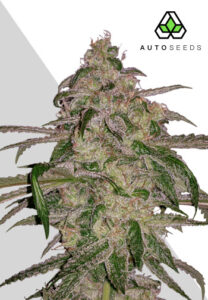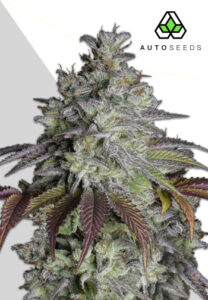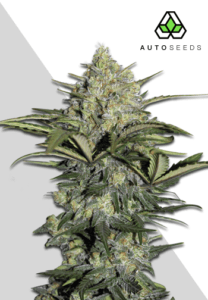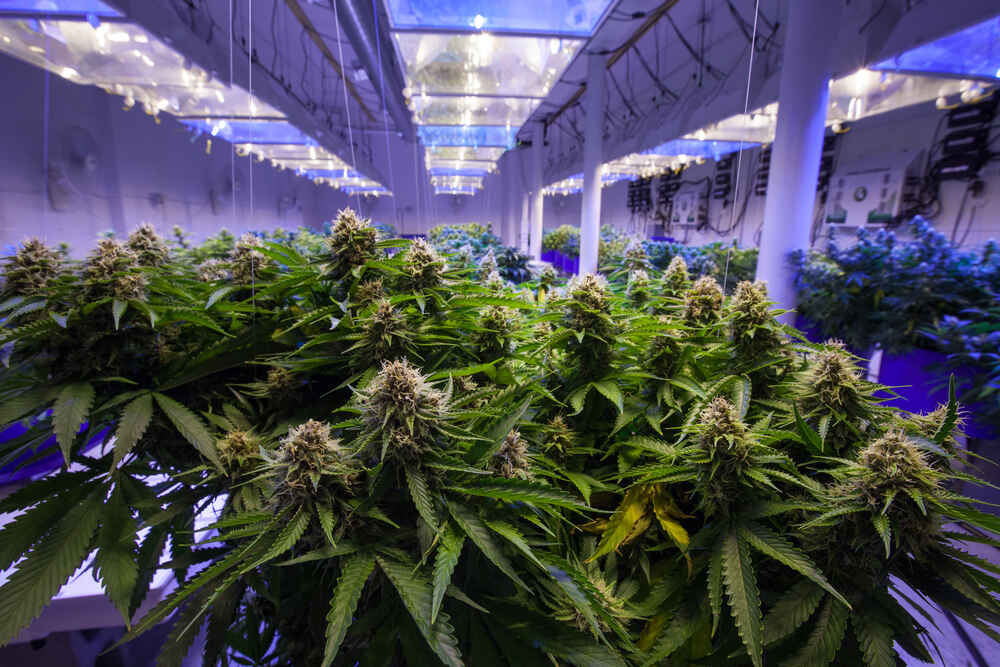
Autoflower vs. Feminized (photoperiod) seeds
When it comes to growing cannabis, you’ll need to ask yourself the question, should you grow autoflowers or feminized photoperiod seeds? Autoflowers are all about speed and simplicity, perfect if you want a straightforward grow and a fast turnaround. Feminized seeds, on the other hand, produce much bigger yields, but can take twice as long to grow. In this article we will take a look at these two cannabis varieties and weigh up the advantages and disadvantages of each so that you can make the right decision for your next grow.
What is the difference between autoflowering and feminized seeds?
Autoflowering seeds are bred to transition from the vegetative stage to the flowering stage automatically, regardless of the light cycle, which means you can keep them on an 18/6 light schedule from start to finish. This trait comes from their ruderalis genetics, a cannabis species that originates in Siberia and has adapted to survive in harsh conditions and grow under very short daylight hours. Autoflowering strains are ideal for beginners, because they are smaller and therefore much easier to grow and maintain indoors where space is limited. They also grow from seed to harvest in as little as 8-10 weeks which is great if you want quick results.
Feminized photoperiod seeds grow on a photoperiod basis, meaning that they flower in response to light schedules. If you grow them indoors during the veg stage, you will use a light cycle of 18 hours of light and 6 hours of darkness to replicate the middle of summer. When you want the plants to enter the flowering stage you need to change light cycle to 12 hours of light and 12 hours of darkness to replicate the end of summer. This gives you more control over the vegetative period and the size of your plants, however, it is an additional element of the grow that can cause complications if you don’t get it right. Feminized seeds often require a bit more expertise and attention, but the payoff is bigger yields.
Where do autoflower genetics come from?
Autoflower genetics trace back to Cannabis ruderalis, a species adapted to harsh climates and short growing seasons of cold regions such as Siberia and Eastern Europe. Unlike its cousins, Cannabis indica and sativa, ruderalis plants don’t rely on light cycles to flower. Instead, they bloom according to age, automatically flowering after 3-5 weeks of vegetative growth. This unique adaptation of the ruderalis species has been harnessed and crossed with other strains to produce the autoflowering seeds we use today. These genetics offer resilience, fast growth and the ability to cultivate cannabis in small spaces such as balconies or closets that otherwise would not be possible.
Advantages to autoflower seeds
Growing autoflowering seeds offers several advantages for growers looking for convenience and efficiency. Firstly, their ability to flower automatically eliminates the need for light schedule management, making them less labor-intensive and reducing energy costs. They have much faster growth cycles and can be ready for harvest within 8 to 10 weeks, allowing you to produce multiple harvests in a single season.
Their compact size is perfect if you are growing discreetly or if you have limited space for your plants, such as small indoor areas or balconies. Additionally, autoflower plants are hardy and resilient, with a naturally strong resistance to temperature fluctuations and common plant diseases. This robustness, coupled with their straightforward growing requirements, makes autoflower seeds a great choice for first time growers.
Advantages to feminized seeds
Feminized seeds also offer more control over the growing process. You have full control over the length of the vegetative stage which allows you to cultivate bigger plants and use a wider variety of training techniques to optimize the plant’s size before triggering the flowering stage. The end result is much bigger plants with a lot more buds. If you are growing outdoors, you can really take advantage of the size difference with some strains growing into what can only be described as cannabis trees yielding 2-3 pounds per plant.
Are autoflower seeds less potent?
The potency of autoflowers has been a topic of debate and going back to the early 2000’s when autoflowers were first commercialized THC levels were around the 10-15% mark. However, modern breeding has led to the development of super autoflowers that can produce big yields with THC levels around the 25% mark. Strains such as Gorilla Glue Autoflower and Sucker Punch have utilized the ruderalis genetics and crossed them with highly potent photoperiod strains. Then over generations we have selectively bred only the most potent offspring to produce autoflowers that can compete on potency with many of today’s feminized strains.
Are autoflower seeds lower yielding?
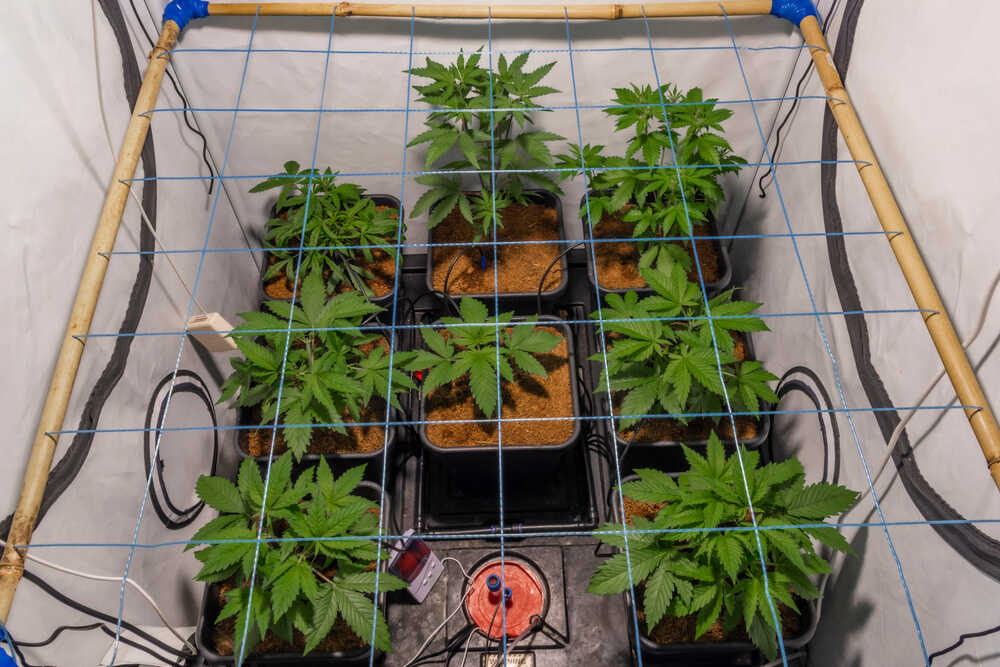
Autoflower seeds typically yield less per plant compared to their feminized counterparts, this is mainly due to their smaller size and faster growing times. Their ruderalis genetics enables them to flower quickly, which naturally limits the vegetative growth period where the plant develops most of the bulk that later translates into yield.
However, the lower yield per individual plant can be offset by the ability to produce multiple harvests in a single season. Where you may only have time to cultivate one cycle of photoperiods over a 20-week period, you could cram in two or even three autoflower cycles in that same window making the overall yield between the two much closer.
Furthermore, advances in breeding have led to super autoflowering strains with improved yields, closing the gap with feminized seeds. While they may not match the highest-yielding feminized strains, the gap is increasingly narrow, making them a great option for growers wanting a quick turnaround and multiple harvests. You can also use low stress training techniques such as ScrOG and sea of green to maximize the yield of your autoflowers. Using these methods and experienced grower could push the yield of an autoflower to around 200 grams per plant.
What kind of grow are autoflower strains suited to?
Autoflower strains are incredibly versatile, making them well-suited to a variety of growing environments. They are the ideal choice for indoor growers where space is limited, as their small size allows them to be easily maintained and grown in compact spaces. Autoflowers don’t require changes in the light cycle to bloom, so growers can maintain a consistent light schedule throughout the grow, which simplifies the setup.
Autoflowering strains are also well-adapted to outdoor grows, particularly in regions with shorter summers, as they can be harvested before the onset of harsh weather conditions. Their hardiness and quick growth cycle make them suitable for multiple outdoor harvests as they can handle much cooler temperatures than photoperiods.
Deciding factors when choosing autoflower or feminized seeds
Autoflowering seeds are not for everyone, it really depends on your individual circumstances, the conditions available to you and what you want to get from your grow.
How quickly you want to harvest
Bred for speed autoflowers transition to the flowering stage without the need for altered light cycles, resulting in a swift harvest, typically within 8 to 10 weeks from seed. If your goal is to go from seed to harvest in the shortest time possible, autoflowers are your best bet.
How much space you have to grow
Autoflowers remain relatively small and are manageable in confined areas, making them perfect for indoor setups or growers who prefer a discreet operation. In contrast, feminized seeds have the potential to develop into larger plants, making them more suited for large grow rooms or outdoor gardens where you can take full advantage of their size.
How big you want your plants to grow
If you want to grow as much bud as possible then feminized photoperiods will always grow bigger. They allow for longer vegetative growth, giving you the power to decide when your plants will switch to flowering, thereby maximizing their size and yield.
How much time you have to dedicate to your grow
Autoflowers require minimal intervention – no need to adjust light cycles, and they’re generally more resilient to grower errors, making them less time-consuming. Feminized plants, however, demand a more hands-on approach, especially in manipulating their light exposure to trigger flowering, a process that requires both time and attention.
How experienced you are
Experience levels play a significant role. Autoflower strains are often recommended for those new to cultivation due to their straightforward, forgiving nature and size. Meanwhile, feminized seeds may be the better choice for more experienced growers who have the ability and knowledge to push their yields to the max.
Conclusion
Whether you choose autoflowering or feminized seeds depends on what you want out of your grow. One thing for sure is that todays autoflowering strains have really closed the gap between photoperiods when it comes to yield and potency. Our autoflowers offer speed and ease, and with our high yielding autoflower strains such as Auto Pounder and Ultra Lemon Haze you’ll even be able to compete on size with many photoperiods and in half the time. Don’t forget to like and share this article!

